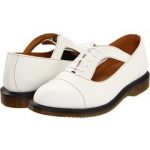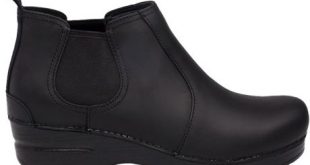Nurse practitioners are advanced practice registered nurses who provide primary and specialty health care services. They typically have at least a master’s degree in nursing, and many have completed doctorate-level education as well.
Nurse practitioners must be licensed to practice in the state where they work. In addition, most states require nurse practitioners to complete a certain amount of continuing education every year in order to maintain their licenses.
Nurse practitioners typically use the initials “NP” after their name to indicate that they are nurse practitioners. However, the way in which these initials are displayed can vary depending on the preference of the individual nurse practitioner.
So, if you are wondering how to display nurse practitioner credentials, there are some things you should keep in mind that you will look at in this blog post.
What is a nurse credential?
The American Nurses Association defines a credential as “a formal recognition of an individual’s qualifications and professional status.” In other words, it is proof that an individual has the education, training, and experience necessary to practice in a particular field.
Credentials are important because they show that a nurse practitioner has the knowledge and skills necessary to provide high-quality patient care. They also help patients to identify nurse practitioners who are qualified to provide the type of care they need.
There are two main types of credentials that nurse practitioners can earn:
1) Certification – Certification is earned by passing an examination administered by a professional organization. This type of credential demonstrates that a nurse practitioner has the knowledge and skills necessary to provide care in a particular area of practice.
2) Licensure – Licensure is required in order to practice as a nurse practitioner in most states. To be licensed, nurse practitioners must graduate from an accredited nursing program and pass a national licensing examination. This type of credential demonstrates that a nurse practitioner has the basic knowledge and skills necessary to practice nursing.
In addition to these two main types of credentials, nurse practitioners may also earn other credentials that are specific to their area of practice. For example, some nurse practitioners may earn certification in a particular specialty, such as pediatrics or family health.
How to display nurse practitioner credentials

Nurse practitioners use a variety of credentials to establish their qualifications and expertise. Here is the correct order to display a nurses credential:
1. Highest earned a degree- The highest earned degree should be listed first. This is typically a master’s or doctorate degree in nursing. For example, “MSN” for a master’s degree in nursing or “DNP” for a doctorate in nursing.
2. Certification- If the nurse practitioner holds a certification, it should be listed next. For example, “FNP-BC” for a certified family nurse practitioner or “ANP-BC” for a certified adult nurse practitioner.
3. Licensure- The Nurse Practitioner should list their state licensure next. For example, “License RN” or “License APRN.”
4. Other Credentials- Finally, the nurse practitioner may list any other credentials they hold. For example, “CDE” for certified diabetes educator or “FACNM” for a fellow of the American College of Nurse-Midwives.
The above is the correct order to list a nurse’s credentials. However, there may be some circumstances in which the order of the credentials is reversed.
For example, if a nurse practitioner holds both certification and licensure in a specialty area, they may choose to list the specialty certification first, followed by their licensure in that specialty.
It is also important to note that not all nurse practitioners choose to use initials after their name. Some nurse practitioners prefer to use the full title “nurse practitioner,” while others may choose to use the abbreviation “NP.”
Ultimately, it is up to the individual nurse practitioner to decide which credential they would like to use.
What not to do:
Do not list credentials that are not applicable to your practice. For example, if you are a certified nurse practitioner but do not hold a specialty certification, do not list the specialty certification after your name. This can cause confusion for patients and may lead them to believe that you are qualified to provide care in a specialty area that you are not actually certified to practice in.
In addition, do not list credentials that have expired or are no longer valid. For example, if you are no longer licensed to practice in a particular state, do not list that state’s license after your name. This can mislead patients and may cause them to seek care from a nurse practitioner who is not actually licensed to practice in their state.
Also, do not use credentials that you are not actually certified or licensed to use. For example, do not use the initials “FNP” after your name if you are not a certified family nurse practitioner. This is misleading and can cause patients to seek care from a nurse practitioner who is not actually qualified to provide the type of care they need.
What are the benefits of displaying your nurse practitioner credentials?
There are many benefits to displaying your nurse practitioner credentials. By doing so, you are showing that you are a qualified and experienced healthcare professional. This can help to build trust with patients and their families, as well as with other members of the healthcare team.
Displaying your credentials can also help you to stand out from other nurses who may not have the same level of experience or qualifications. In addition, displaying your nurse practitioner credentials can help you to secure employment or advance in your career.
Many employers prefer to hire nurses who have their credentials prominently displayed. And, if you are applying for a promotion or seeking a new position, having your credentials on display can give you a competitive edge.
Conclusion
Displaying your nurse practitioner credentials is an excellent method to demonstrate that you are a qualified and skilled healthcare provider. There are many benefits to doing so, including building trust with patients and other members of the healthcare team, securing employment, and advancing in your career.
Just make sure that you only list credentials that are accurate and up-to-date, as using expired or invalid credentials can mislead patients and damage your credibility.
 Nursing Trends
Nursing Trends







